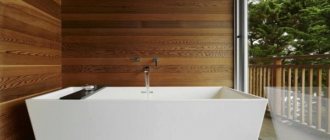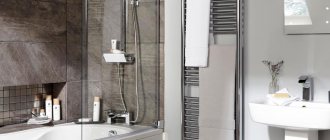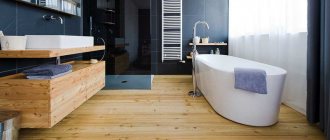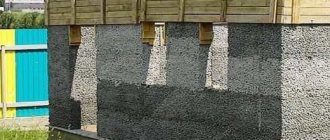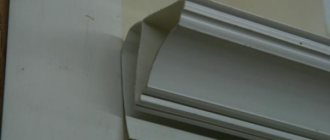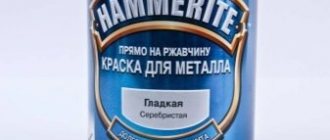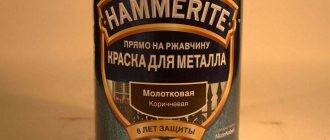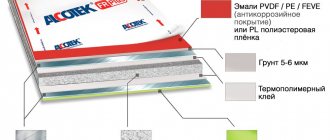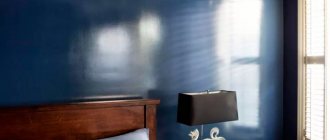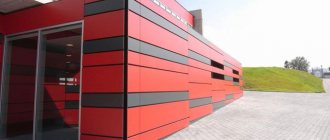The walls in the bathroom are treated accordingly and with appropriate materials so that the increased humidity inherent in this room does not lead to the appearance of fungus and gradual destruction. It is customary to decorate a bathroom with tiles, but this is not the only water-repellent material that can create a bright design in a room.
What is Pva glue used for?
PVA universal adhesive (PVA-MB) is used for gluing products made of wood, paper, cardboard, leather, for gluing paper and fabric onto wooden, glass, and metal surfaces, as a component of putty formulations, primers, and water-based concrete mixtures.
Interesting materials:
What was Anna Akhmatova's real name? How to find the height using the Pythagorean theorem? How to defeat Detlaff? How to defeat Captain Skull? How to clean stone from a toilet elbow? How to clean a comb comb? How to clean the registry? How to clean a manual coffee grinder? How to clean pike scales with boiling water? How to clean catfish from mucus with boiling water?
Technology of pasting works
First you need to prepare the required amount of film. The calculation is made after all measurements are taken.
Having determined the length, height and width of the walls, all obtained values are multiplied and the quadrature of the treated surface is calculated. In accordance with the obtained result, they buy the required footage of oilcloth. In this case, it is worth considering allowances for material with a pattern. In this case, it is better to purchase more material, since during pasting you will need to combine the images.
Oilcloth in the bathroom interior
Work always begins with dismantling the old coating. Remove the remaining paint and whitewash from the walls, remove the plaster. After this, the surface is leveled with putty, and when it dries, it is carefully primed.
Many people are interested in how to glue oilcloth to the wall in the bathroom. For such material, the well-known types of glue “PVA” or “Bustilat” are usually used. They are easy to prepare by following the instructions on the package. After this, the composition must be left for some time to swell.
PVA or Bustilat glue is suitable for film without a base or with a fabric backing. When finishing with paper-based oilcloth, a special adhesive mixture for vinyl wallpaper is also used. It is advisable to pay attention to the production date of the glue. The composition must be fresh.
Adhesive "Bustilat" for film finishing of walls
As soon as the glue for the oilcloth has infused, you can directly begin cladding the walls. The principle of operation is very similar to wallpapering. The mixture is applied to the cloth in a dense layer. You need to coat all areas with glue well, including the corners. Otherwise, when fixing the film on the wall, air bubbles will form.
Material care
Oilcloth is a very low-maintenance type of cladding. When it gets dirty, simply clean it with water and any detergent. Some stains are difficult to remove. In such cases, you can use alcohol-containing compounds or regular vodka.
It is not advisable to use hard abrasives to wash self-adhesive films. They can damage the canvas or erase the pattern from it.
Oilcloth has won the love of customers due to its cost-effectiveness and ease of installation. This coating can be easily re-glued or individual sections replaced. It does not require special care and is completely waterproof. Using film, you can quickly and effortlessly change your boring bathroom design.
In addition, the choice of such materials is very wide. This provides owners with the opportunity to implement any creative ideas during bathroom renovations.
Assortment of self-adhesive films
Choosing oilcloth for cladding bathroom walls
Oilcloth with backing
Plastering bathroom walls Oilcloth in the bathroom interior Bustilat adhesive for film finishing of walls
Preparing walls before wallpapering work
Oilcloth with a pattern
Moistening the canvas before attaching it to the wall
Indoor wrapping work
Thin oilcloth without base
Decorating bathroom walls with oilcloth
Minuses
- The main disadvantage of self-adhesive film is the requirements for the surface to be pasted: it must be perfectly flat and clean.
- It is also not always possible to glue the film on a large surface yourself.
The stickers do not have such shortcomings.
Self-adhesive film (or, as it is also called, “self-adhesive”) is the best material for “quick repairs,” including in rooms with frequently changing temperature and humidity conditions.
Volumetric stickers that can always be peeled off and re-glued in another place will also look interesting, and not a trace of them will remain on the surface.
How to choose the right one
There are some selection rules:
- First you need to correctly calculate how much material will be glued. Take measurements of your room without taking into account windows and doors. Divide the perimeter of the room by the width of the material and determine how many strips can be obtained from one roll. Calculate the number of rolls taking into account inventory.
- When choosing a color, be guided by the rest of the furnishings in your room.
- For the bathroom you can choose prints in a marine style.
- You can not cover the entire room, but decorate a certain area with an interesting print.
An interesting solution for the bathroom could be oilcloth with imitation tiles.
Thanks to materials such as self-adhesive, you can decorate your bathroom in any style.
Film is the optimal solution for those who want to add color to a monochrome palette
Useful tips
Uniform application of glue avoids air getting under the canvas. However, even if small bubbles remain, such a defect can be easily corrected. These areas must be carefully cut with a blade, releasing air, and then smoothed out. Before gluing, it is recommended to treat the walls with a primer or a mixture of glue and water.
Indoor wrapping work
Along the upper edge of the film under the ceiling, you can fix a decorative “border” in the form of special paper strips or a wallpaper edging. You just need to choose the appropriate color edging in advance.
Possible problems when gluing to a surface and their solutions
In the process of gluing surfaces with self-adhesive film, not everything always goes smoothly, especially if this is done for the first time in your life. Minor defects can be eliminated quite easily.
So, air bubbles are removed using an ordinary needle. It is enough to poke a small hole and gently press the film so that the air comes out through it, and then smooth it out with a spatula.
Jams and folds can be removed within a few hours after gluing. To do this, you need to peel off the film with a sharp movement (but carefully enough so as not to tear it), and then glue it back.
If the film comes off the surface within a few hours after gluing, most likely it was not clean enough. There may be dust particles or greasy stains left on it. In this case, you can try to re-do the surface preparation and re-glue the film. But if there is a layer of dust left on the sticky side of the film, then it is unlikely to stick again. In this situation, you will have to replace the film in the problem area.
Installing film in the bathroom: advice from professionals
Features of film installation
If the oilcloth in the bathroom is intended for gluing a wall panel, wooden frame or base made of other natural material, you must perform the following steps:
- Sometimes you need glue for oilcloth in the bathroom, which you need to buy according to the recommendation from the manufacturer, and prepare the base itself. The panel must be cleaned of remnants of the previous coating, dust, and grease. Degreasing is easily done with water and any detergent. The surface must be clean, smooth and free of noticeable irregularities. You will have to try and plaster the wall to perfect condition (if possible), otherwise the self-adhesive film for the bathroom will strictly outline all the bumps and may break through in the holes.
Advice! If the walls in the bathroom are tiled, there is no need to remove them. There is a film on sale for bathroom tiles, and it’s very simple to use: wet it in water and apply it tightly to the wall - the coating sticks tightly.
- When gluing wooden surfaces (cabinets, bedside tables) there will be no inconvenience. Even if the boards are varnished, the base will accept the cladding and the self-adhesive bathroom film will fit perfectly. Porous and rough surfaces need to be primed for better adhesion. Putty the walls and, after drying, also cover them with primer.
Advice! When choosing a primer, give preference to an acrylic base. This will ensure the most durable adhesion of the film to the surface of the base.
- The film can be cut either according to the squares shown on the back of the cladding or “by eye”. Marking with a pencil will help make the cutting smoother. It is better to use a mounting knife and a ruler. Do not forget to leave a margin of a maximum of 2.5 cm, but only if the coating pattern allows such manipulations. If the decorative film for the bathroom is made with a pattern, you need to cut it from the front side. It is convenient to cut self-adhesive with imitation “tiles”: you can choose any side and then combine the pattern on the surface.
Advice! In the case where the bathroom film is intended to cover metal surfaces or glass, it is necessary to slightly moisten the base.
- Covering a bathroom with film can be done according to the instructions printed on the back of the cover. As a rule, the manufacturer indicates the order, work pattern, required adhesive composition (if required) and final operations. But if this is not the case, don’t worry. The whole job is quite simple: - separate the backing from the coating by about 3-4 cm and apply the adhesive base to the surface. It is advisable that the film on the walls in the bathroom be applied as evenly as possible. Having glued the edge, carefully remove the backing with one hand and level the coating with a squeegee or felt spatula with the other hand. This is done so that the self-adhesive for the bathroom and toilet lies flat, without air bubbles.
Advice! It is better to smooth the cladding from top to bottom and from left to right. It turns out that air will escape on all sides.
- Random bubbles should be pierced with a needle or knife and the area should be ironed again, moving the squeegee from the edge of the bubble to the center (puncture site).
Advice! Instead of a squeegee, you can use a piece of plastic with a soft cloth attached to the end.
- Folds must be removed immediately. With a sharp movement of your hand, lift the film and stick it again, following all the recommendations. Typically, self-adhesive bathroom film can withstand up to 2-3 peels and sticks. But you should not leave the folds for later, after one and a half to two hours the coating can no longer be torn off.
- It’s clear how to cover a bathtub with self-adhesive film on flat surfaces, but there are also corners:
- if the angle is right, it is enough to cut the parts of the coating that protrude at approximately an angle of 45 degrees, bend them and glue them;
- The round edge is glued as follows: using a hairdryer, heat the coating until it is warm enough, fold it over and evenly glue the inside of the edge.
Advice! After pasting the corners and edges, you need to warm up the entire surface with a hairdryer. This is done to ensure stronger adhesion between the coating and the base.
Types of material
How to glue the film in the bathroom “on water”: spray an aqueous solution on the surface, completely separate the coating from the substrate and firmly attach it to the base. It is important to be able to quickly straighten the surface to avoid the appearance of wrinkles, creases, bubbles and “expelling” excess water. This option is used for small areas.
What wallpaper should I use in my bathroom? Recommendations for choosing wallpaper for wet rooms
Advice! If you add detergent to the water, the self-adhesive film for bathrooms will lie flat, will “sit” not only firmly, but if necessary, it will be removed after abundant irrigation. But don’t worry, until you want to remove the covering, it won’t slide off even if you briefly direct a stream of water at it.
To better understand how to stick film in the bathroom and see interiors where there is self-adhesive film for bathroom walls, look at the photos below. The choice of design will force you to abandon expensive cladding and prefer an inexpensive, but simple and very beautiful option with self-adhesive for bathrooms.
Colored oilcloth for the bathroom
In Soviet times, the choice of building materials and the shortage of furniture often led to the fact that many housewives did not allow many housewives to realize their creative ideas in their apartments. Despite this, the owners created a beautiful design and competently equipped their home.
For example, to decorate the walls of the bathroom, oilcloth for walls was used, and if you were lucky with the purchase, then self-adhesive colored films. The choice of material, of course, was small, so we were content with what we could buy. In Soviet times, the owner of an apartment often glued the material himself, and also knew how to glue the oilcloth; this knowledge was passed on by word of mouth.
In modern times, everything has changed for the better; manufacturers offer a wide variety of materials to suit every taste, color and budget. On the market you can find a huge assortment of self-adhesive oilcloth; of course, this material is inferior in quality to ceramic tiles. But if you waterproof it correctly and glue the film to the wall, then such a coating will reliably protect the bathroom from moisture.
Varieties
There are three types of self-adhesive:
- Cork . Composition: artificial materials. Type of cork finish and wax surface. Has different colors and textures. Differs in service life.
Cork self-adhesive is protected from moisture by a wax layer
- Satin . Type of fabric wallpaper. The composition includes impregnation for the bathroom.
Satin wallpaper for the bathroom is impregnated with a special composition that will protect it from moisture
- Adhesive tape . The base is an adhesive coating, the most suitable option for the bathroom.
Adhesive tape
Quick application to metal and glass surfaces
There is also a quick method of gluing self-adhesive film. It is mainly used for covering glass and metal surfaces with film. Water is used for this. It is most convenient to use a spray bottle. The surface should be well wetted, and then a film should be applied to it, completely separated from the substrate. Thanks to the water, it will not stick immediately, which will make it possible to level it on the surface. Then use a soft spatula to remove excess water and smooth out wrinkles and bubbles.
